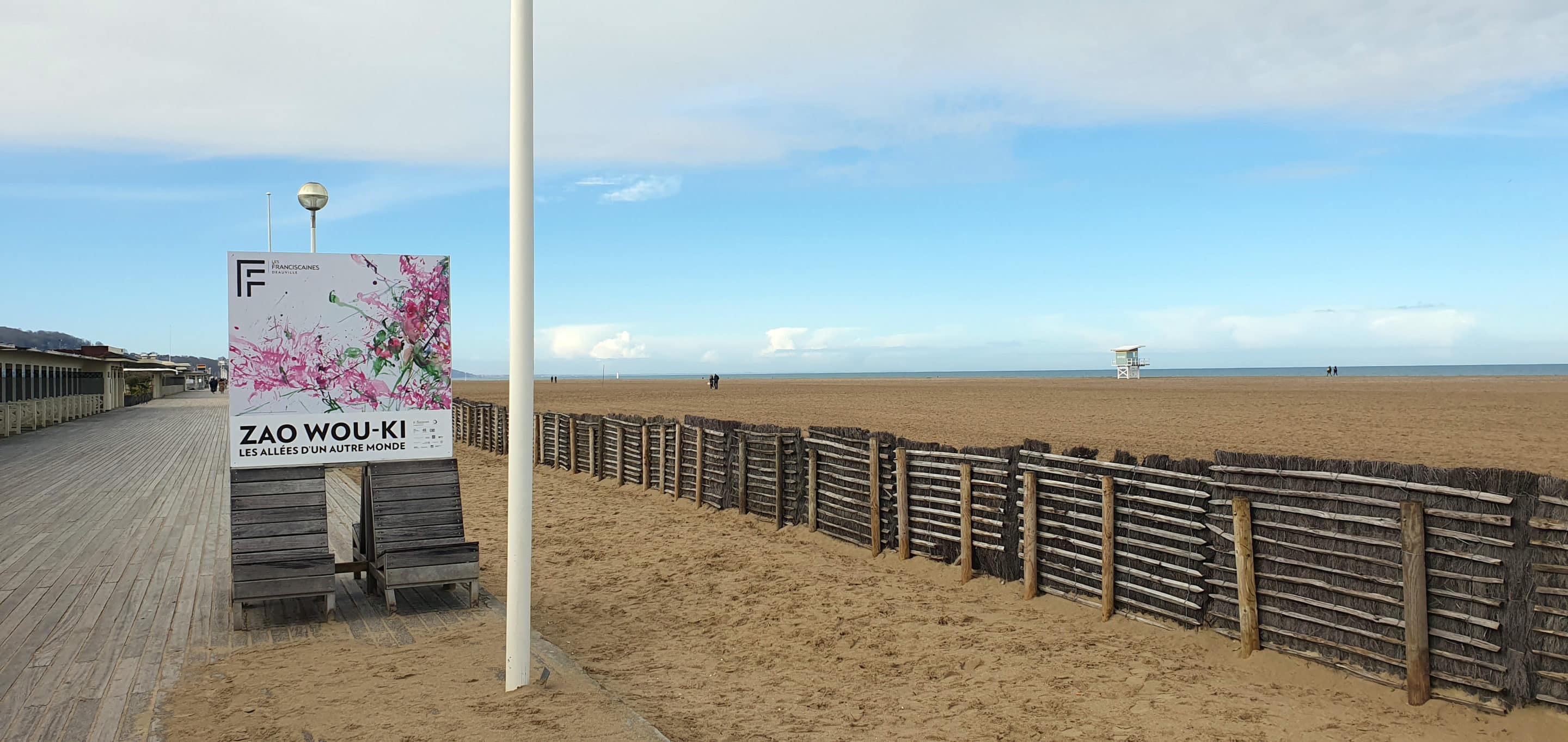
往期展览 From March 2nd to May 26th 2024
«Zao Wou-Ki – Les allées d’un autre monde (The alleys of another world)» at the Franciscaines in Deauville
The exhibition at the Franciscaines in Deauville, organized by Gilles Chazal, general curator of heritage and honorary director of the Musée du Petit-Palais in Paris, offers the visitors an original point of view on Zao Wou-Ki’s work. Highlighting the creations of the last thirty years of his life (between 1980 and 2010), it shows all of Zao Wou-Ki’s creative areas and the great coherence of his work.
Just like the Franciscaines, a place open to all creations and all knowledge, this exhibition presents oil paintings, watercolors and inks on paper, prints and illustrated books, but also painted ceramics and porcelains as well as a tapestry.
The oil paintings presented allow a quick tour of his painted work, evidencing the importance given to the void. The central part of the exhibition highlights the great triptych Hommage à Claude Monet dated 1991, an essential step in Zao Wou-Ki’s work. Benefiting from a natural zenithal lighting recreating, as closely as possible, the light of his studio, this painting takes on a special resonance under the Norman light and in the perspective of the 150th anniversary of Impressionism, an artistic movement dear to the artist.
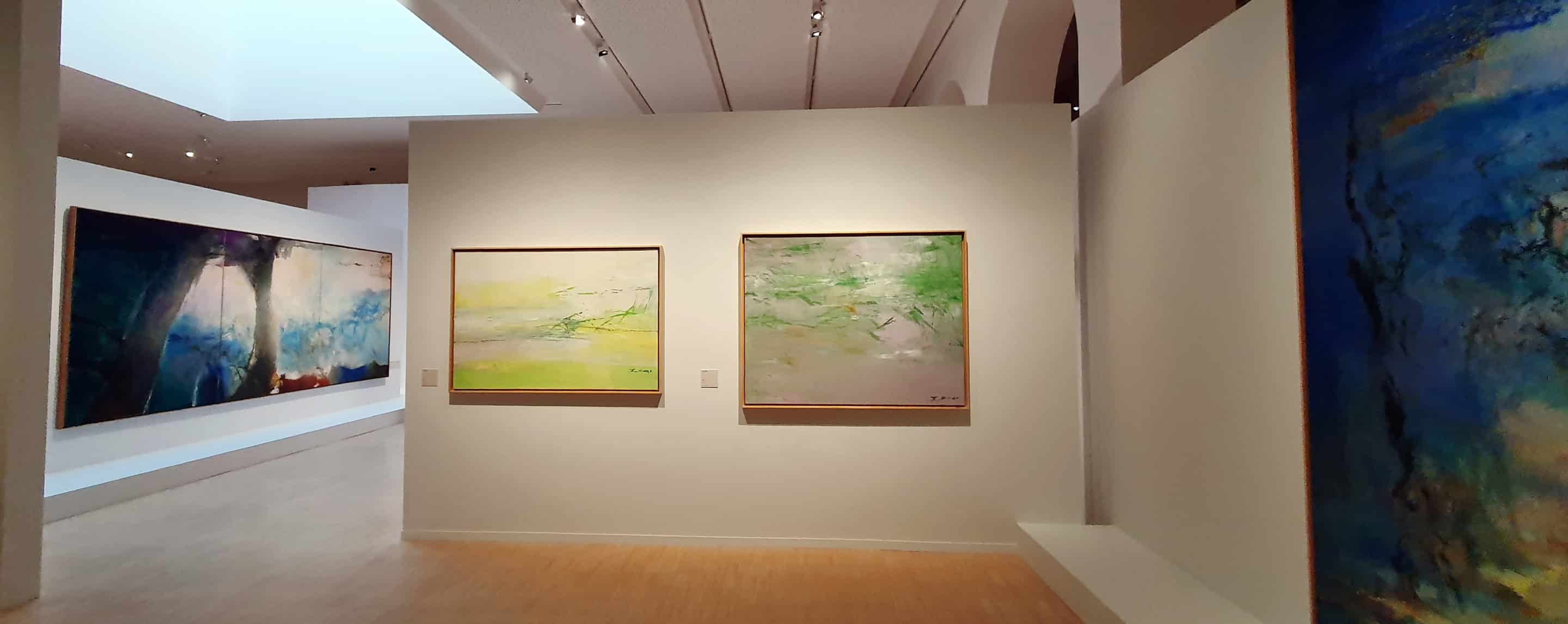
View of the rooms dedicated to paintings at the Franciscaines in Deauville. All rights reserved
In every room, the exhibition confronts painted works with works created in collaboration with national manufactures, such as the national manufactory of Sèvres for porcelain and the national Gobelins manufactory for tapestries where Zao Wou-Ki worked since the 1970s, or private companies such as the Bernardaud House in Limoges for painted porcelain or the Francis Delille editions in Burgundy for painted steles, published in 8 copies. The exhibition benefits from the exceptional loan of a large Gobelins tapestry granted by the Mobilier national de Paris.
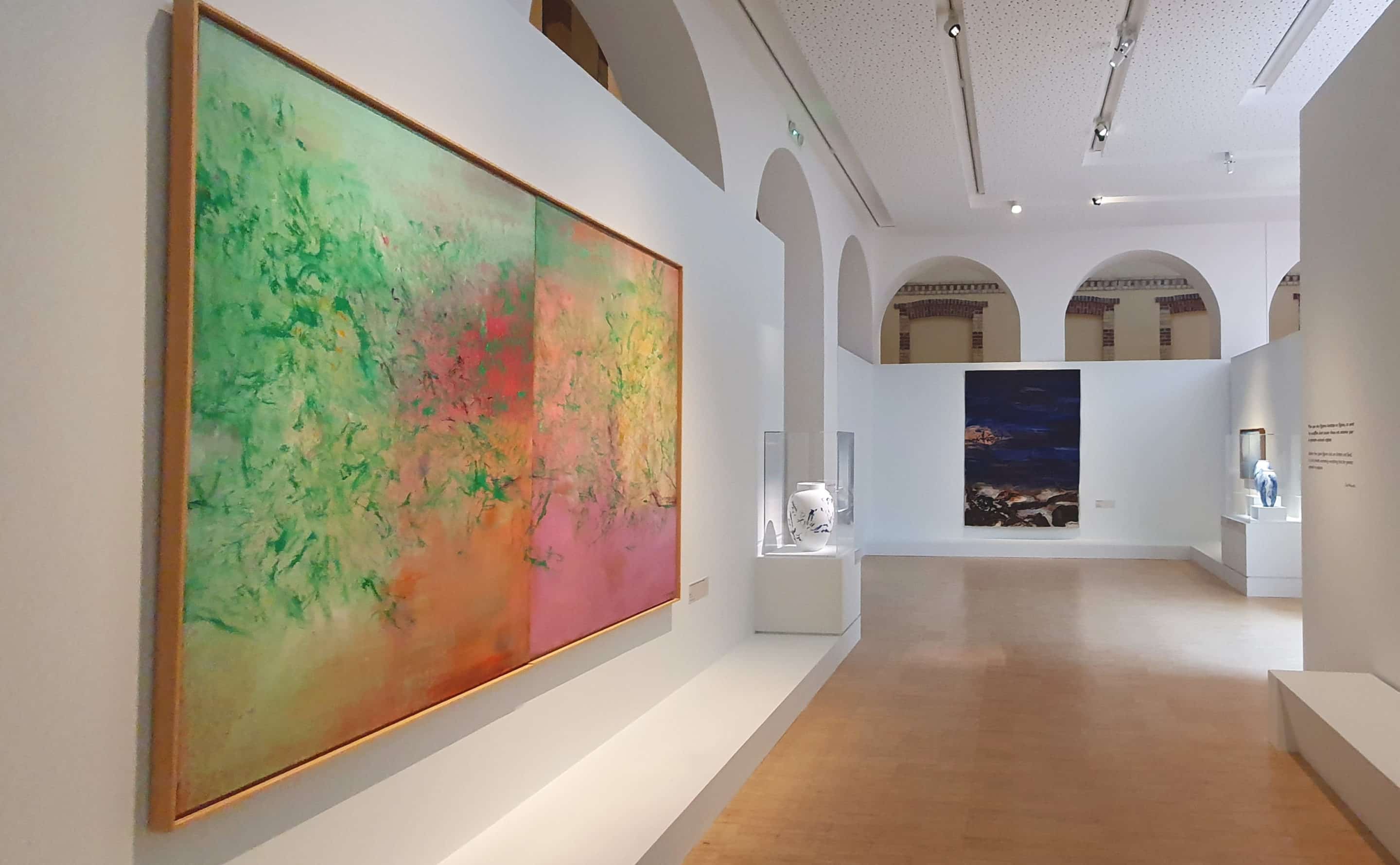
View of the exhibition at the Franciscaines in Deauville. All rights reserved
Several rooms are dedicated to the work of India ink on paper. Although he put this technique aside when he arrived in Paris in 1948, for fear of being labeled «Chinese painter», Zao Wou-Ki continued to practice it in his studio. From the early 1970s, thanks to the advice of his friend Henri Michaux, Zao Wou-Ki rediscovers this technique and works diligently. It then significantly influences his painting, putting the void at the heart of his research and fluidizing his brushstrokes.
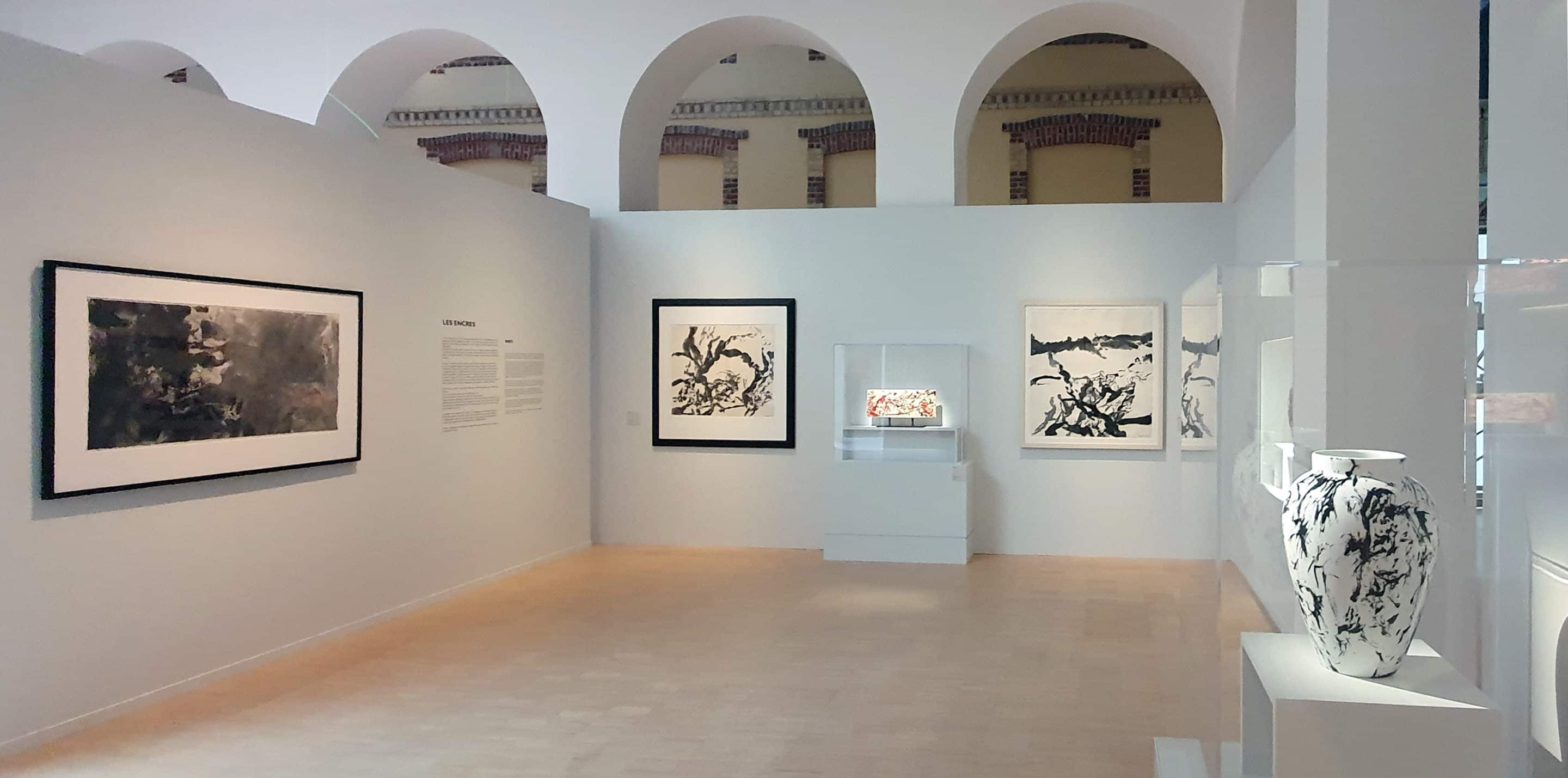
View of the India inks room at the Franciscaines in Deauville. All rights reserved
Among the India inks stands a very large ink dated 2006, a project for the creation of the stage curtain of the Peking opera that did not succeed. The large composition created for the college of La Seyne-sur-Mer in the Var, commissioned by his friend, the architect Roger Taillibert, also author of the Olympic swimming pool of Deauville in 1966, is presented for the first time to the public in the adjacent gallery.
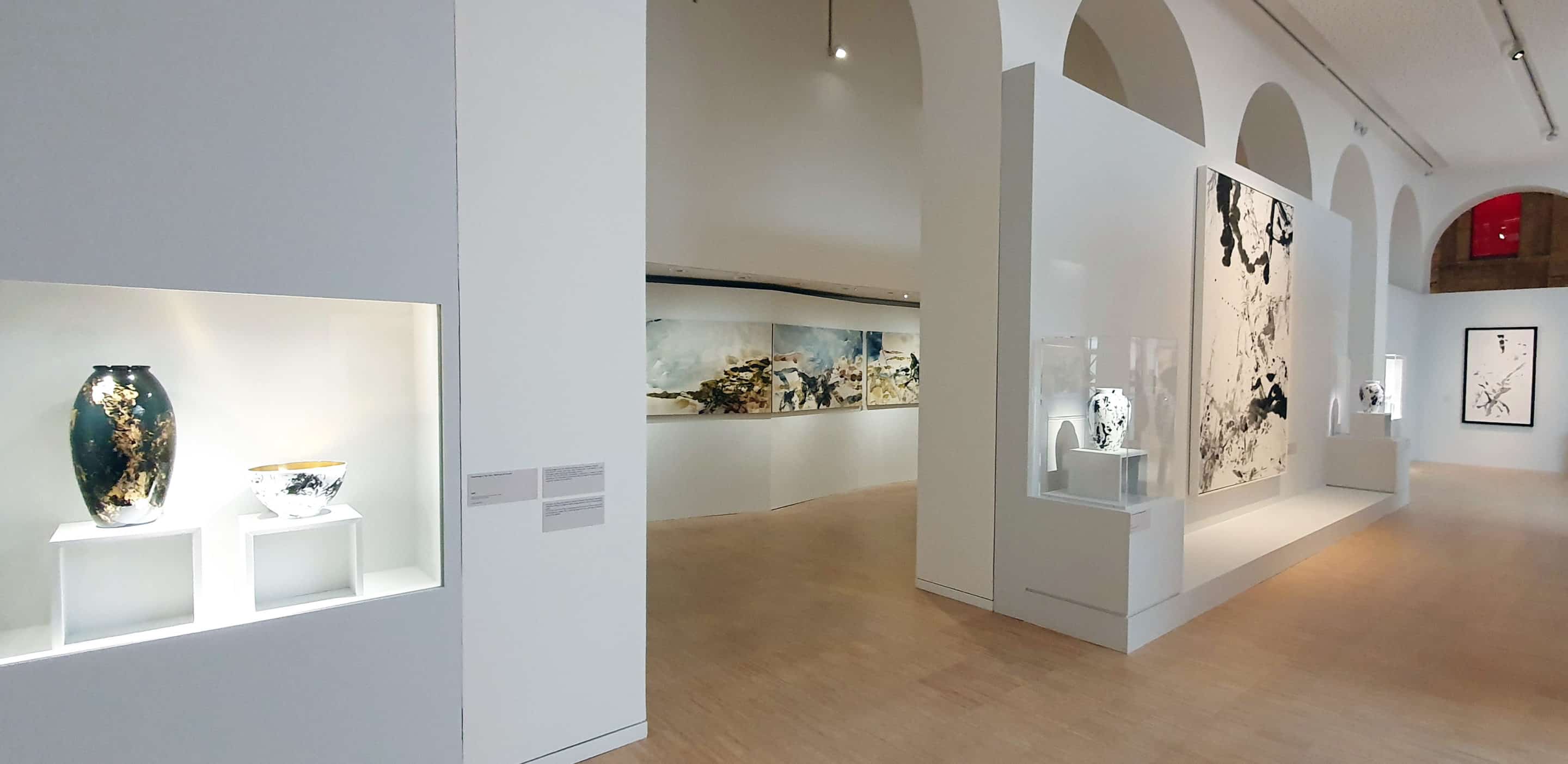
View of the India inks room and of the composition for La Seyne-sur-Mer at the Franciscaines in Deauville. All rights reserved
The exhibition also presents books illustrated by the artist, an essential element of his work, which highlights his links with poetry and poets, such as René Char, Ezra Pound and Yves Bonnefoy. A section is also dedicated to watercolors on paper. This technique benefits from Zao Wou-Ki’s renewed interest as of the mid-2000s. It allows him to continue to explore the infinite richness of nature and colors in increasingly free compositions. The exhibition presents one of the artist’s last works, created in 2010, before he decided to stop painting.
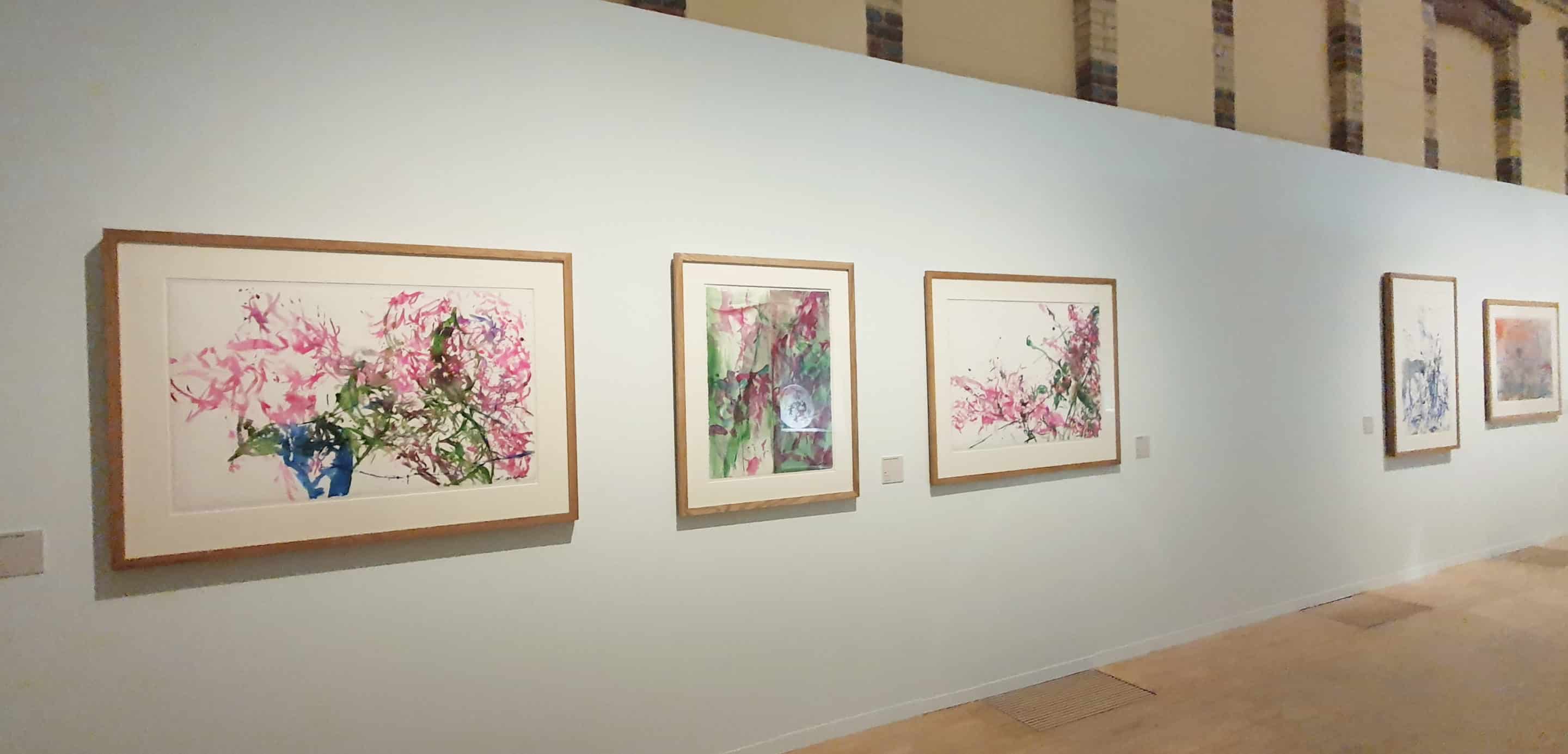
View of the gallery dedicated to watercolors on paper at the Franciscaines in Deauville. All rights reserved
Throughout the visit, this exhibition also benefits from quotations from the artist, from his Self-portrait, an autobiography written in 1988 with his wife Françoise, and from his translation of Lao Tseu’s Tao te King. A painter at the crossroads of several traditions, one of the first of his generation to create a link between Chinese tradition, European and American paintings, Zao Wou-Ki shows here the extent of his talent and his passion, never limited, for creation and color.
